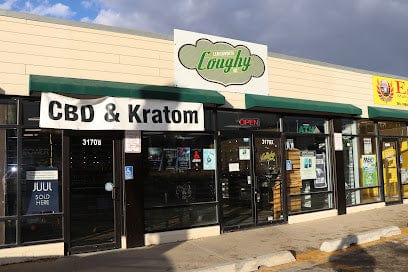CBD – Is It Natural?
CBD (cannabidiol) is this year’s cryptocurrency, not merely for the fact that it resembles an almost blockchain-like channel into the body’s systems, but because there now seems to be an infinite amount of information cropping up from all over the internet on how it works and if it’s worth investing in despite the hype.
Some people believe that CBD has the power to revolutionise natural medicine and provide a safe alternative to pharmaceutical medications, whilst others believe that not enough long-term research has been done, and those who look to CBD and hemp-derived products should err on the side of caution.
It’s difficult to see the truth through the hype and countless sources of information; however, researchers in the early-1990s through til now have found that there is a positive relationship between CBD and our bodies.
To know how this relationship works, it’s worth exploring CBD, our body’s endocannabinoid system (ECS), and how they work together.
The Endocannabinoid System
Each and every one of us has an ECS. It’s a naturally occurring biological system found in the limbic, nervous, and immune systems.
The ECS is made up of two primary endocannabinoid receptors (“endo” meaning produced and found within the body). These receptors are:
CB1 receptors, which are predominately found in the brain, the nervous system and some peripheral organs and tissues. They help to maintain core functions such as pain perception, stress response, and memory.
CB2 receptors, which are predominantly found within the body. They help to maintain the immune system, inflammatory system, and pain.
When our bodies start to deteriorate – whether it be through poor health, self-infliction, or simply by natural ageing – our endocannabinoids start to loose their productivity.
Here’s where CBD comes into play.
Cannabidiol (CBD) & How It Interacts With The Body
CBD is the non-intoxicating phytocannabinoid (“phyto” meaning grown outside of the human body and on the hemp plant). Unlike its equally well-known cousin, THC (tetrahydrocannabinol), CBD will not give you that “high” feeling.
As stated previously researchers have stated that there is a positive and mutually beneficial relationship between endocannabinoids and phytocannabinoids.
They believe that when CBD oil (or other CBD products) enter the body, they stimulate the CB1 and CB2 receptors so that the body naturally uses more of its own existing endocannabinoids. This, therefore, influences how the receptors actually utilise endocannabinoids more effectively.
If a person has a cannabinoid deficiency, CBD intake can help bring back more of a natural equilibrium to their body.
However, the production of endocannabinoids is just the start. The byproduct of increased endocannabinoid activity is the activation of other receptors, almost like flicking a lightswitch. These receptors include:
Adenosine: Gives the sensation of reduced anxiety and reduced inflammation.
Vanilloid: Regulates or lowers the body’s core temperature and thus affects inflammation.
Seratonin (5-HT1A): Known for its anti-depression properties – will make you feel good.
Here we can see how CBD can be viewed as an effective natural remedy. Studies such as this [https://www.ncbi.nlm.nih.gov/pmc/articles/PMC4604171/] and this [https://www.ncbi.nlm.nih.gov/pmc/articles/PMC4604171/] highlight the potential that CBD and hemp-based products have in combating and reducing anxiety, PTSD, OCD, and other forms of psychological and physical health ailments.
However, there is still much to be explored when it comes to CBD. The scientific community are still working to conclude if CBD and hemp-derived products are actually safer alternatives to pharmaceutical medicine.
NOTE: These statments have not been verifed by the FDA. CBD is not meant to diagnose, treat, prevent or cure any disease.





Comments (0)
There are no comments for this article. Be the first one to leave a message!